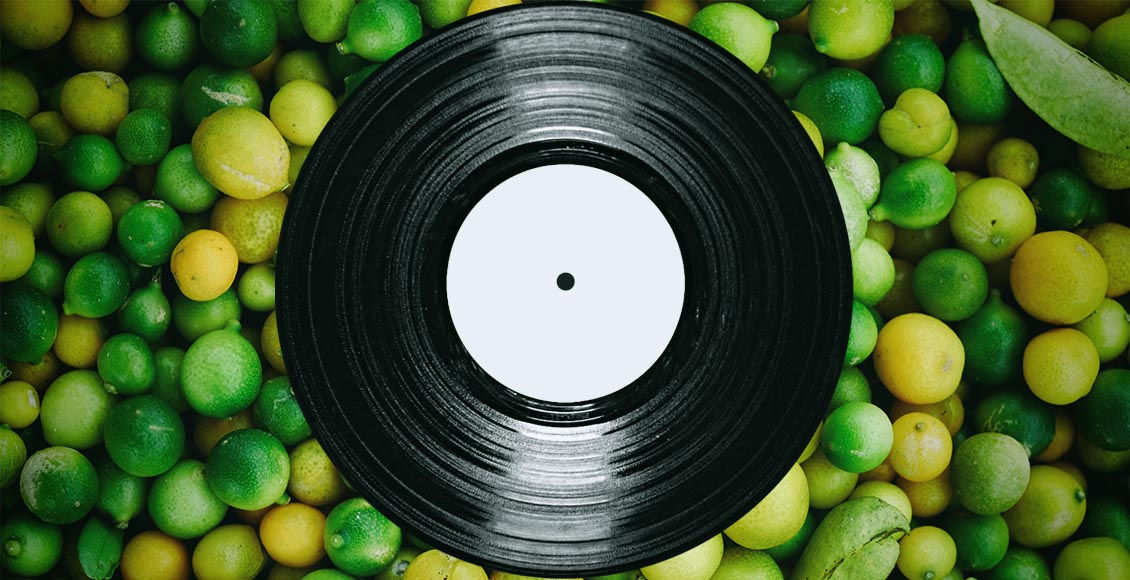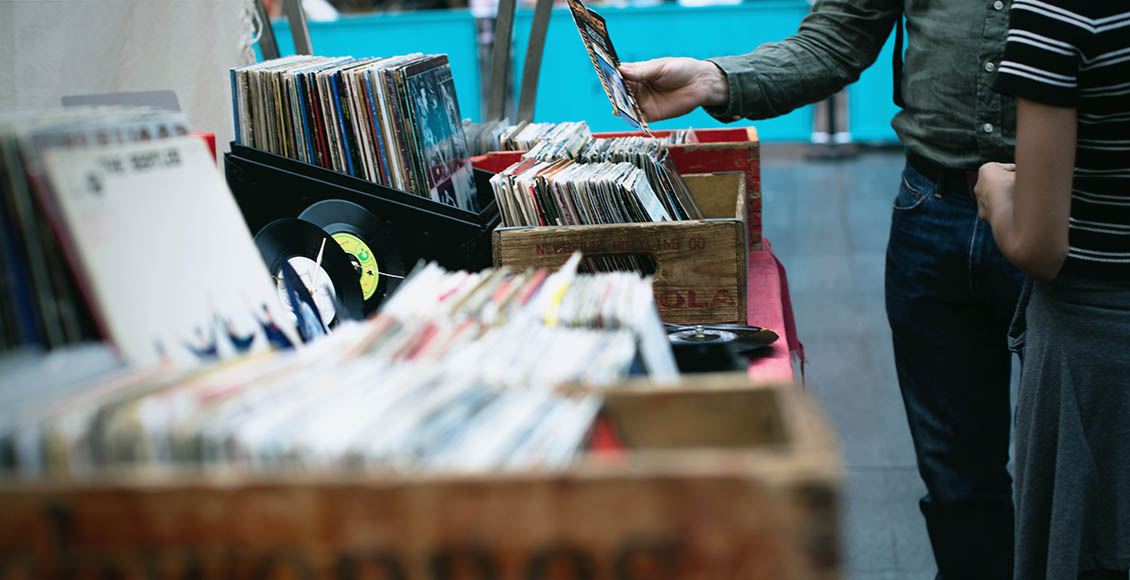Residents and other DJs that play regular gigs frequently fall into the trap of playing similar sets week after week, reusing transitions, and playing the same mixes and mashups. While the average club goer may have no idea, the regulars and the staff certainly notice. Being an open format DJ or a DJ who never plans their sets doesn’t protect you either; Once you discover that Song A transitions perfectly into Song B it will cement itself in your brain whether conscious or not. Going forward every time you play Song A that perfect transition will become forefront in your mind and you’ll be likely to pull out Song B. Overall, these go to transitions aren’t in themselves a bad thing but it becomes a problem when regulars and staff can predict your next five songs the second you hit play on a track.
You may be asking yourself what exactly are you supposed to do when as a regular you have no choice but to play the hot new tracks. How can you keep things fresh and set yourself apart when you have no choice but to play the latest Bieber track whether you want to or not? The answer lies in what you play between the must plays, in how you source your music, and in tracking your sets week to week.
Keeping Things Fresh

The first step is admitting you have a problem.
Let me get this out of the way before anything else, I am just as guilty as the next guy or gal. I spent years playing every single Friday and Saturday and have fallen into routine countless times. The following tips and techniques are things I have done personally to break free from predictability but even now it’s something I have to work at.
Step 1. Recognize the problem
Being aware of the last time you played your tracks is the easiest way to identify the problem. While DVS software like Traktor and Serato and even RekordBox USB drives all maintain a history, it’s only useful if you look at it and compare your sets week to week.
To combat the fact I never look at the history when I was playing regularly with Serato I added a column to my crates that I didn’t use for anything (Grouping in my case) and used it to track my plays.
- The first day I started tracking I marked every track I played with “a1” in the Grouping column.
- The second day I marked every track with a2 overwriting the a1 if I was playing the same track.
- I continued a3, a4, etc. until reaching a9 and switched to b1 the next day.
If today was Saturday and the tag I was using was “c3” I knew anything marked “c2” had been played the night before. I also knew a track marked “b4” hadn’t been played in a few weeks.
There were three immediate benefits to this system;
- Right in the crate I was aware of how much overlap there was between what I was currently doing and my last few sets
- If I was in a pinch and had no idea what to play next I could search for the tag from the previous night and intentionally choose something I knew worked recently.
- If I wanted to play something I knew I hadn’t played in a while (or ever) I could search for an old tag or tracks with no tag at all.
USB DJs will need to rely on the play count or reviewing history between gigs as I haven’t found a better method since switching to USB (if you have a method for USB sticks please share in the comment.) That said, depending on the model and generation of CDJ you should be able to view the history from the unit which could be useful.
Step 2. Forge a less predictable path

Once you’ve developed a way to identify the songs you’ve played recently you will need to make a conscious effort to stop following the predictable paths. As you reach for the tenth time for a track you played the night before look instead to a different remix or better yet something different entirely.
Periodically I would even challenge myself to play an entire hour without using a single track I had played before. Which I might add, is harder than it sounds. We tend to convince ourselves if a song is in our crates for months and we have never played it that there must be a reason but it’s more often we didn’t have an opportunity early on, it was forgotten, and then we choose the safe tracks we know have worked before. There are probably gems hiding in your library right now that you’ve never played; You downloaded them for a reason, give them a shot.
To help yourself, part of your digging strategy when sourcing music should include downloading multiple remixes of the same song and downloading all of those “I might play this” tracks and not just the “I have to play this!” ones. To that end, you should choose music sites and record pools that offer lots of selection and value for your dollar.
Tip: Delete transition comments from your library
Countless tips online state that you should use the comment tag on your tracks to note good transitions. For example, it may be recommended that on Song A you add the comment “Good Transitions: Song B or Song C” when you discover particularly good transitions. The idea is that in a pinch your comments can lead you to another track that has worked in the past if you don’t know what to play; However, what actually happens is people don’t just use those comments to get themselves out of a bind, they follow them as a DJ-by-numbers pattern every time they get behind the decks.
Go into your collection right now and delete any tags that are there to direct you to the next track to play.
Tip: “Mixing in key” could be part of the problem
Don’t misunderstand, harmonic mixing is incredibly important if you want your transitions to sound good. What isn’t good is scanning your entire library with key detection software and then sticking religiously to 1A -> 2A -> 2A -> 2B -> 3B -> 3A -> 4A style transitions. When you are limited by what is in your library, limited by what is appropriate for the venue, limited by what the dance floor is responding to, and then further limit yourself by following basic harmonic “rules” you’re more likely to homogenize your sound.
Take a look at Advanced Key Mixing Techniques for DJs for other possible harmonic transitions if following the tags or follow your ears every now and then. Over time you’ll know in your headphones whether or not a transition is going to be harmonic and can break free from reliance on tags all-together.
Tip: Take some different gigs to keep yourself from getting bored
If you find that no matter what you just cannot bring yourself to innovate week after week you may be headed for a burnout. If you play the same House music all the time look for a gig that will allow you to play something completely different. Taking even a week away to play something else can be enough to infuse new life into your sets.
You might even find that the successes of the new gig will inspire you to bring things you did there to your regular sets infusing them with new life.
Finding Your Unique Sound

Things can get worse when all the residents at a venue play virtually the same music. When the regulars and the staff cannot tell the DJs apart from each other and each DJ is predictable. Monotony has become the name of the game and that leads to boredom for everyone involved which affects the mood of the venue. Trying too hard to sound like others instead of yourself also leads to playing what’s safe as the music isn’t speaking to you the way it should.
Remember, we are DJs not jukeboxes. Part of our job is curating music through our own tastes and presenting it in our own ways. Sure, playing at mainstream venues means you need to play the latest hits but you still get to choose the remixes and the way you mix the tracks together.
Step 1. Identify your tastes
It’s not uncommon for new DJs to idolize a select few big names and build a library of similar music early in their careers; However, over time it is important to expose yourself to a wide selection of music and choose the sounds that appeal to you directly not just your desire to sound like a particular headliner.
If you haven’t already, sign up for a streaming service like Google Play Music or Spotify and take every opportunity to let their algorithms show you new music. As much as possible stray outside the “recommended for you” sections and expose yourself to as many possibilities as possible. (In a previous article I talked about how I personally use Google Play Music to discover music.)
Stop relying on the “top downloads,” charts, recommendations, and other DJs as the arbiters of what you select for your own library.
Step 2. Shop around for music sources

Another common trap is for people to sign up for the first record pool or music site they find. Then they never shop around after that. To see this in action ask for advice on record pool selection on any forum. You’ll get lots of “I have been an UltraAwesome Record Pool member for 10 years” comments. The problem is that most record pools are heavily curated by their staff and present uniform content whether you realize it or not. Remember, a dozen Electro House remixes to choose from for every release isn’t necessarily better than six remixes to choose from if those six spans multiple genres (unless Electro House is what you’re after). It also impossible to be unique if everyone uses the same pool with the same paltry selection.
I am not going to call out any pools by name as you can go back through countless reviews here on DJ TechTools, many of which I wrote myself. But I will say that some of the most popular pools that I see recommended all the time lack real variety. They may post lots of music and the number of remixes and edits may be high but it all tends to sound the same. There are a few pools where you can search for the latest hot track and choose between Electro House, Deep House, Techno, Drum and Bass, Urban, and other disparate genres when selecting a remix but they aren’t the ones I see recommended on a forum because they tend to cost more. You get what you pay for.
Make sure you don’t lock yourself into a sound through blind loyalty to a music source. You may even need to sign up for multiple pools to truly diversify your selection.
Being Fresh = Happy DJs and Audience
Even if you don’t care that the staff and regulars notice you play the same music night after night take it from someone who has been DJing in clubs and lounges for over a decade: Do it for your own sanity. Keeping things fresh and being true to your own tastes will stop DJing from becoming a job, or worse, a chore. Sometimes you may even need to take different gigs to inject new life into your craft; I left the House/Tech-House club scene for several years to play NuDisco, Funk, and RnB in lounges. Stepping back into clubs now I feel reinvigorated having been away long enough that the monotony I wasn’t always even aware of has dissipated.
Take some time to examine your habits in the DJ booth. Branch out when you go search for music. Take steps to make a percentage of every set different from the one before. The staff, the regular, and your own psyche will thank you.
Finally, even if you need to conform to the general style of the venue, with experimentation it is possible to be venue appropriate and still unique. A DJ who is into what they’re playing creates a positive feedback loop. The audience and they will follow you.





